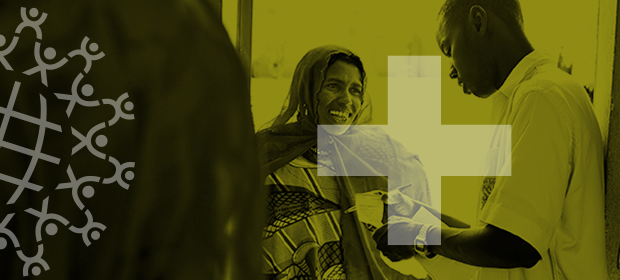Where We Work
See our interactive map


The lack of data on frontline health workers, particularly community health workers (CHWs), constrains training, service delivery, and decision-making in global health.
To understand better why this data is critical, and what can be done to improve it, mPowering Frontline Health workers and the One Million Health Workers Campaign are conducting a series of interviews to hear from the experts.
This week, we interviewed Dr. Kate Tulenko, Vice President, Health Systems Innovation for IntraHealth International and director of CapacityPlus, USAID’s flagship health workforce project.
Many policy makers are still skeptical of the value of community health workers.
Dr. Tulenko previously coordinated the World Bank’s Africa Health Workforce Program and has served on expert panels for the World Health Organization, the Rockefeller Foundation, and the American Hospital Association, amongst others. Her latest book, Insourced, identifies the links between the US and global health worker shortage and offers affordable solutions. Follow her on twitter at @ktulenko.
Why is data on frontline health workers, particularly CHWs, important?
Better data on CHWs would help demonstrate their impact and cost-effectiveness, especially in medically underserved communities.
There are still many policy makers who are skeptical of the value of CHWs. If we can demonstrate their value, we can get CHWs added as a formal member of the health team, with proper support supervision, a career ladder, and a salary. Better data will also help policy makers see how fragmented CHW programs are geographically and thematically and will push them to integrate the disparate CHW programs into a unified program that addresses the largest causes of preventable mortality and morbidity in the country.
What are the most pressing challenges in the development of scale-up of CHW programs today?
The biggest challenges are resistance to the formalization and scaling up of CHW cadres by medical and nursing associations; and the perception by Ministries of Finance that health workers are an expense, rather than an investment with long-term benefits. Ministries of Health Human Resources for Health teams need improved capacity to manage their workforces.
Donor support for CHWs is still constrained by the continued pattern of investment in vertical programs- moving forward, donors and should provide systemic, focused, long-term investment in CHWS.
In your opinion, what type are the largest gaps in data on frontline health workers, particularly CHWs, right now?
There’s so little data that one can’t speak about specific gaps. It’s all a gap.
iHRIS has saved countries millions of dollars by helping remove ghost workers from the payroll and reinvest that money in real health workers.
In what ways is your organization using innovative solutions to collect data on frontline health workers?
IntraHealth supports the free, open-source iHRIS software. iHRIS is being used by 20 countries to track and manage more than 1.3 million health workers, many of whom are CHWs. iHRIS stores data including: health worker cadre, posting site, gender, date of birth, and salary. iHRIS has been shown to save countries millions of dollars in proprietary software fees.
Plus, iHRIS has saved countries millions of dollars by helping them remove ghost workers from the payroll and reinvest that money in real health workers. Most importantly, iHRIS helps countries place their health workers more efficiently.
For example, in Jharkhand, the government was able to double the number of health facilities providing emergency obstetric care and increase care to a population of 900,000. In Guatemala, iHRIS has reduced hiring times from three months to 3 weeks. This is extremely important since many health workers emigrate or drop out of the job market if hiring takes too long. iHRIS has been made interoperable with DHIS2, a popular open source district health information system, so that that staffing can be compared to service levels to determine health worker productivity.
IntraHealth is also supporting countries to determine workloads and staff needs via Workload Indicators of Staffing Needs (WISN) analyses of existing health teams. In Namibia, IntraHealth has assisted the government to conduct WISN analysis in all government health facilities in the country (hospitals, health centers and clinics). The results have been used for budgeting of health workers for the last three years.
The first step is to help ministries of health formalize community health workers.
Together with UNICEF, IntraHealth has developed and deployed mHero, a system that enables regular, targeted SMS communication with health workers via SMS on standard mobile phones. mHero was used in Liberia during the Ebola crisis to determine which health workers were reporting to work and which health facilities had sufficient protective equipment. mHero can be used by other countries to communicate with CHWs and other health workers in remote areas.
How can we begin to close those gaps?
The first step is to help ministries of health formalize CHWs. This means developing standard training curricula; creating regulations to guide CHWs in their work; establishing professional associations for CHWs; defining career ladders to help CHWs stay motivated and advance professionally; and to gather and use data on CHWs. CapacityPlus created a brief on professionalizing under-recognized cadres that guides countries through this process.
This post originally appeared on the mPowering Frontline Health Workers blog.
Get the latest updates from the blog and eNews




